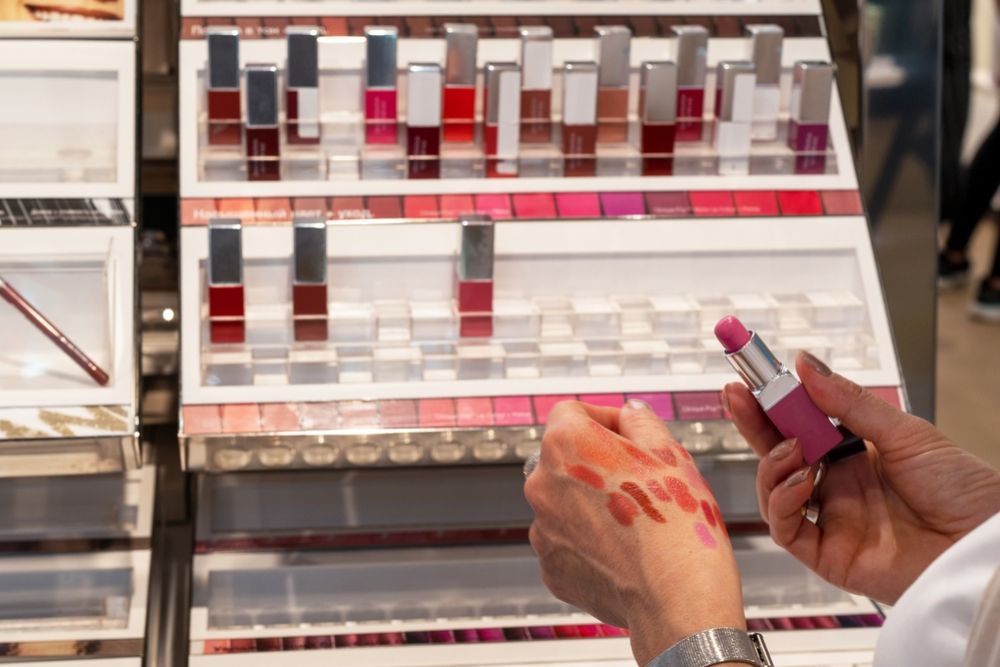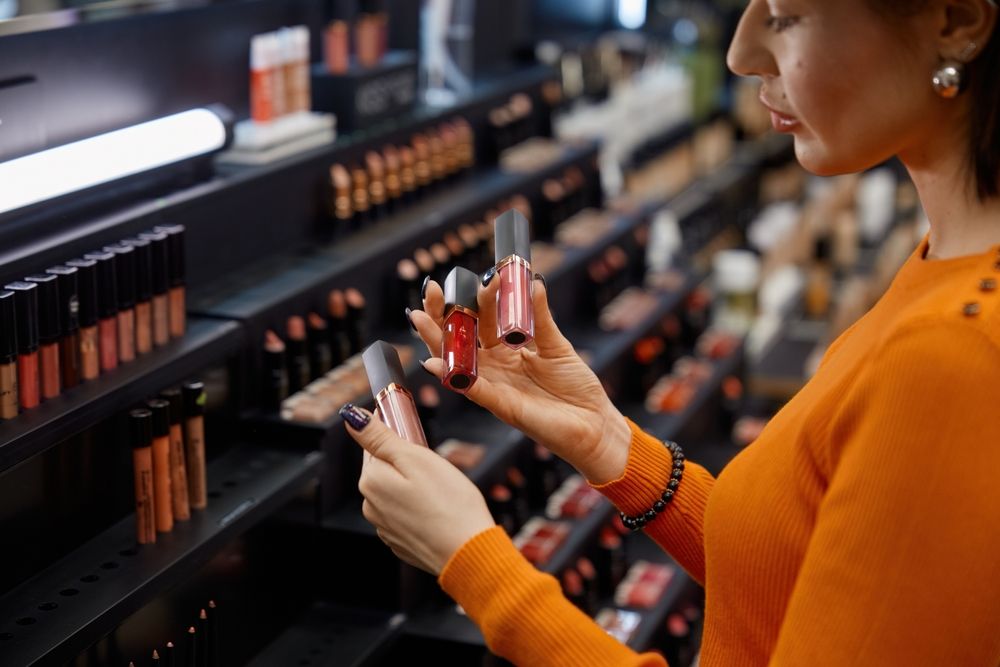Choosing the right lipstick shade can transform your entire makeup look, boost your confidence, and even brighten your complexion. With so many colors on the market—from subdued nudes to bold reds and vibrant pinks—finding “the one” can feel overwhelming. The good news is that a few guiding principles can simplify the process.
1. Know Your Skin Tone and Undertone
Lipstick color doesn’t exist in a vacuum; it plays off your skin’s unique pigmentation. Understanding whether you have fair, medium, or deep skin tone is the first step, but it’s equally crucial to identify your undertone—warm, cool, or neutral—as this influences how colors appear on your lips.
Determining Your Skin Tone
- Fair/Light: Usually burns easily; may have freckles or a more translucent look.
- Medium: Tans more easily, can vary from light olive to tan complexions.
- Deep/Dark: Richer brown skin tones that rarely burn, deeper melanin levels.
Finding Your Undertone
- Warm Undertones: Veins appear more greenish; gold jewelry complements you better; you might notice yellow or golden hints in your skin.
- Cool Undertones: Veins look bluer or purplish; silver jewelry looks more flattering; you may see pink or blueish hints in your skin.
- Neutral Undertones: You can wear both gold and silver comfortably, and your veins may appear somewhere between green and blue.
2. Matching Shades to Undertones: Warm, Cool, and Neutral
Undertones are central in guiding which lipstick shade will enhance your features rather than overpower them. While experimenting is always fun, these “rules” can lead you to choices that feel instantly “right.”
For Warm Undertones
- Coral, Peach, and Orange-Red: Their warm, sunny undertones harmonize with the golden or yellowish tinge in your skin.
- Brick Reds and Terracotta: Rich earthy reds accentuate your warmth.
- Rusty Browns: Warm browns or caramel-infused shades can look stunning on deeper warm tones.
For Cool Undertones
- Blue-Toned Reds and Berry Shades: Classic reds with a slight blue base or berry hues (like raspberry or plum) can complement your coolness.
- Soft Mauves and Cool Pinks: Undertones of purple or cool pink feel in sync with pinkish skin hints.
- Deep Wine or Cool Purples: For darker complexions, these can look sophisticated and elegant.
For Neutral Undertones
- Versatility: You can often pull off both warm and cool shades, so don’t be afraid to dabble in corals, pinks, berries, or warm browns.
- Universal Reds: Shades like classic true reds (not overly blue nor orange) tend to flatter neutrals especially well.
3. Considering Occasion and Mood
Lipstick is more than a color; it can be a fashion statement or reflect your emotional vibe. A fiery red might be perfect for a glamorous party, but might not fit in certain professional or casual settings. Matching your lipstick choice to the event (and your mood) ensures a cohesive, confident overall look.
Occasion-Based Recommendations
- Everyday Office: Soft nudes, muted pinks, or MLBB (“my lips but better”) shades that enhance your natural lip color without drawing heavy attention.
- Formal Events: Classic reds, deep berries, or sophisticated mauves can elevate your ensemble. Pair with more subtle eye makeup if you want your lips to be the main statement.
- Casual Outings: Have fun with peachy corals, tinted lip balms, or comfortable satin finishes that are easy to touch up.
- Night Out or Party: Metallic or bold matte finishes—like electric purple or dark wine—convey drama and creativity.
4. Finish and Texture: Matte, Satin, Gloss, and More
Beyond color, the lipstick’s finish impacts how the shade reflects light, your comfort level, and the overall vibe it gives off. Some textures emphasize boldness, others lean more subtle and hydrated.
Common Lipstick Finishes
- Matte: High color payoff, minimal shine. Can appear sophisticated, but might be drying if worn all day.
- Satin/Semi-Matte: Offers a balanced sheen—slightly luminous but not glossy—combining comfort and vibrancy.
- Gloss: High shine and often more sheer. Excellent for a youthful, plumper-lip effect, though it can require frequent reapplication.
- Cream: Very comfortable, moderate shine, easy to wear and reapply. Good for daily use if you want a smooth, hydrated look.
- Liquid Lipsticks: Vary in finish (from matte to metallic). Typically long-wearing but can emphasize lip lines or dryness if you don’t prep lips well.

5. Swatch and Test If Possible
Lipstick can look drastically different in the tube, on your hand, and on your lips. Testing a color on your actual lips gives the most accurate sense of how it complements your skin tone and undertones.
Tips for Testing
- Try On Lips: Testing on your wrist or hand is a quick approach, but your lip’s natural pigmentation can alter how a color appears.
- Use Natural Light: Indoor store lighting can distort colors. If possible, step near a window or check in natural daylight.
- Sanitary Practices: If sampling at a makeup counter, use disposable applicators or request a sanitized product to avoid sharing germs.
- Check Dry Down: Some lipsticks (especially liquid mattes) can change color as they dry or set. Wait a minute or two before deciding.
6. Skincare Prep and Lip Condition
No lipstick—however luxe—will look its best on chapped, flaky lips. Prepping your lips with exfoliation and moisture ensures a smooth canvas that enhances the color payoff.
Lip Prep Routine
- Exfoliate: Gently remove dead skin using a sugar scrub or a soft toothbrush.
- Hydrate: Apply lip balm or a hydrating primer. Let it sit for a few minutes to sink in.
- Optional Lip Liner: Helps define shape, prevents feathering, and can prolong wear.
7. Considering Formula and Longevity
Some days call for a long-lasting, transfer-proof formula (think special events or long meetings), while others might be better served by a comfortable, quick-apply bullet lipstick that can be re-touched easily.
Long-Wearing vs. Easily Removable
- Long-Wearing/Transfer-Proof: Great for events where you can’t frequently touch up. But they can be drying—pair with a lip balm or primer.
- Regular Cream or Satin: Shorter wear time, but more forgiving on dry lips and simpler to reapply without caking.
- Sheer and Tinted Balms: Easiest to reapply on the go, offering a subtle tint rather than strong coverage.
8. Budget vs. Premium Brands
Lipsticks range from a few dollars at the drugstore to $40+ from luxury brands. Both can deliver excellent quality, so knowing what you value—ingredients, packaging, brand prestige—helps guide wise spending.
Drugstore vs. High-End
- Drugstore: Budget-friendly, wide color selection, improvements in formulas over the years mean you can find decent payoffs without the steep cost.
- Mid-Tier: Good balance of quality ingredients, packaging, and brand reputation at moderate price points.
- Luxury: Premium packaging, extensive color range, unique formulas, sometimes enriched with skincare-like ingredients.
Finding the perfect lipstick shade isn’t just about following color rules—it’s about discovering the hues and finishes that complement your unique features, reflect your mood, and align with the occasion. Start by understanding your skin tone and undertone, then explore a range of warm, cool, or neutral-based hues that fit your personal preferences. Don’t forget to consider your environment—an everyday nude might be best for the office, while a dramatic berry or classic red could shine at evening events.
Equally important is the lipstick’s formula and finish, be it a comfortable satin or a bold matte, ensuring you’re happy with both the look and the feel. And remember, healthy, well-prepped lips showcase any color beautifully, so keep them exfoliated and moisturized. Ultimately, lipstick is a fun extension of personal style, so while guidelines can help you navigate the vast selection, don’t hesitate to break the rules if a color makes you feel good. Embrace experimentation, test under natural light, and gradually build a range of shades—ensuring you’re ready for any mood, outfit, or occasion that comes your way.



